When the client buys one too many glulams “cause the salesman said I needed three”….
I opened my big mouth.
Troy Sprout
Square, Level & Plumb Renovations
Edited 3/21/2006 10:29 pm by Hackinatit
Edited 3/21/2006 10:29 pm by Hackinatit
Edited 3/21/2006 10:30 pm by Hackinatit
Edited 3/21/2006 10:31 pm by Hackinatit
Edited 3/21/2006 10:31 pm by Hackinatit
Edited 3/21/2006 10:32 pm by Hackinatit
Edited 3/21/2006 10:32 pm by Hackinatit
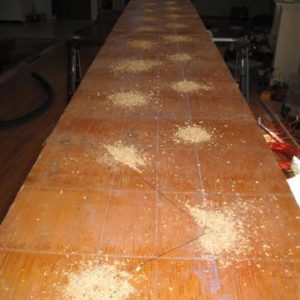
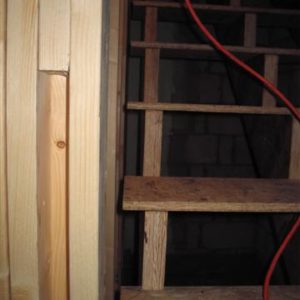
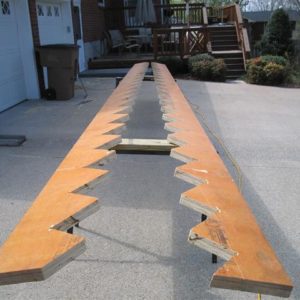
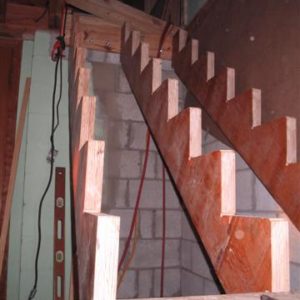
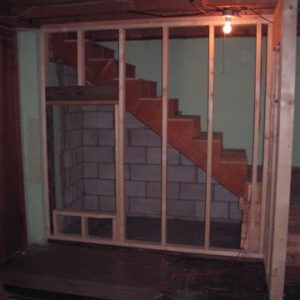
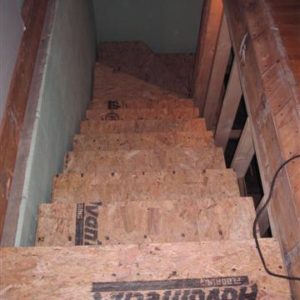
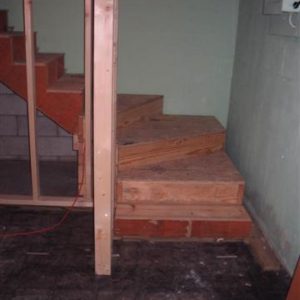



















Replies
Nice job, Troy.
I like how you cut the sawtooth cuts with drill and jigsaw to eliminate waste.
Out here we call those things microlams.
Bill
Thanks Bill.
I thought microlam was the brand of glulam.
I plunge cut the teeth with a 7.25 PC spinning a new 40 tooth Freud blade. Just touching the end of the 1/2" hole leaves a full cut.
Troy Sprout
Square, Level & Plumb Renovations
Looks somewhat time consuming. I guess that was the origin of the "big mouth" comment?
When I went up to MN to visit, I saw what looked like OSB rimboard being used as stringers - although I'm guessing it was an engineered wood product specifically designed for stringers... Had to wonder about the materials ability to hold edge nails.
Cuts took a bunch of time... but the stability of the material eliminated fussing with checked 2x12's during the install. "Bout the same overall.
Hardest part was moving the 24 footer outside (one man, 6' & 155#). The rest was simpler than normal.Troy Sprout
Square, Level & Plumb Renovations
Troy, nice looking set of stairs. Hats off for not wasting the materials. I'll tuck the drill idea into the back of my mind too.
Thanks.
"A job well done is its own reward. Now would you prefer to make the final payment by cash, check or Master Card?"
Those staris aren't likely to bounce!
Just as an aside, those looked like plywood type laminations, are they? Out here in Western Washington "glulams" are something else - they are beams built up by gluing individual boards one on top of another to create a tall beam. Very strong, might have been one of the first "engineered" framing members beside plywood and roof trusses in common use out here.
That MIGHT be what we call "microlam" but I think of microlams as real high density oriented strand beams. Similar to o.s.b., but with much smaller solids and a lot more dense than o.s.b. Also very strong, but more expensive than a comparable gluelam.
Not trying to nitpick. Just as a matter of interest what terminology folks use in various geographic areas. Tipi, Tipi, Tipi!
http://www.asmallwoodworkingcompany.com
Up north I think we'd call that LVL (laminated veneer lumber). Very different from a gluelam. Just talking terminology here. It's a nice looking set of stairs no matter what you call it.
Thanks.
I believe you are correct re: "LVL". My brain must be tenderized after hearing that blade sing on the plunges.Troy Sprout
Square, Level & Plumb Renovations
Up north I think we'd call that LVL (laminated veneer lumber).
Same here.Speak the truth, or make your peace some other way.
Bounce? Considering the full 6" carrying width under the risers.... ain't likely. I would like to get the wait staff from Hooters to come test it, though. ;-)
Plywood type lams? Yes. At $280 for a 24 footer, it's a bunch higher than 2x12's, but it allowed me to assemble as a free standing system and easier drywall/tread/skirting/trim on the back end. It may be that the total cost is a wash... and I'm all for "easier".Troy Sprout
Square, Level & Plumb Renovations
Microllam, I believe is the actual brand name for the LVL lumber that is manufactured by trussjoist MacMillan. It is actually LVL (laminated veneer lumber). Microllam, I assume, has become a commonly accepted name much in the same way people ask for a Kleenex (an actual brand name) when they want a tissue.The high density orianted strand beams are called PSL (parallel strand lumber). The brand made by trussjoist is known as parallam.Lately, in many houses we have done we are specing stringers cut from LVL. They are stiff as hell. I hate bouncy stairs. It may be overkill, but I think you get a nice, strong set of stairs. Also, I think that in the stair building article in a recent issue of FHB, the carp was using LVL stringers.
Edited 3/22/2006 1:34 pm ET by xosder11
TrusJoist's come out with a line of stair stringer sizes, all made neither from their Parallam or Microlam, but made with their LSL material (Laminated Strand Lumber).
The LSL stock for the stringers is either 1.5 or 1.75 thickness, I cannot recall which. I am thinking also that they list its modulus.
Their rimboard LSL products are thinner, maybe 1.25, and no modulus is given.
I might be more prone to use LSL as a stringer than LVL (and I have used LVL) because of the better screw and nail retention in LSL versus on-edge LVL.
You are right on the money.
I came across these when trying to puzzle out a different issue and tucked it away.
http://www.trusjoist.com/PDFFiles/2124.pdf
http://www.trusjoist.com/PDFFiles/2123.pdf
"A job well done is its own reward. Now would you prefer to make the final payment by cash, check or Master Card?"
Cool, I'll check it out. I know they came recently with a new offering of products. I need to go through the new material and familiarize myself with that. Thanks.
Edited 3/22/2006 5:20 pm ET by xosder11
We've been using the TrusJoist stringers for about a year and a half and while they are heavy, man are they nice to work with :-)
I believe they come in 14" widths too, but the 11 7/8" stock we use is 1 1/4" wide. It really is a nice material.
View Image
The drilling makes for no hand sawing and makes the angle stronger than a saw overrun. Still gotta flip it and finish the cuts on the backside, though.Troy Sprout
Square, Level & Plumb Renovations
This is somewhat of a moot point since it's been noted that you were using LVL's and not glulam's but...
I think there may be some issues using a glulam for a stringer. Dimensional lumber is graded for a specific width and you can't rip it down and retain your grade (ie 2 2x6's from a 2x12) and I would bet glulams are the same.
All glulam's are marked with a top and bottom and the material near the center is typically a lower grade than that of the edges. Notching might really throw things out of whack.
Jon Blakemore
RappahannockINC.com Fredericksburg, VA
"All glulam's are marked with a top and bottom..."
Even the zero camber we can get nowdays, Jon? (and man oh man, was I glad when they started making those babies. It's within the last few years they've been available here.) Tipi, Tipi, Tipi!
http://www.asmallwoodworkingcompany.com
Jim, that a good question. Maybe someone knows for sure?
Jon Blakemore RappahannockINC.com Fredericksburg, VA
All I know for sure is that I recall exactly one zero camber glulam I used. It was marked for top and bottom. They could make them bilateral, but that would raise the price, since tension wood is more spendy than compression wood. This assumes simple end-supported spans, of course.Bill
Great pictures,
do you have anymore of the framing before you put
your treads on. With the new 6" min. at the narrow end
of the tread, I'd like to see how you handled this.
The one set of winders I built was years ago and that was
before the new code went into effect so all I needed was the
pie shaped treads.
That 6" minimum makes you use the entire 48" width of the decking. I just made 3 boxes. These are the only pics I have of their (dis)assembly.
View Image
View Image
Troy Sprout
Square, Level & Plumb Renovations
Edited 3/23/2006 8:16 am by Hackinatit
Edited 3/23/2006 8:16 am by Hackinatit
<I just made 3 boxes>
Thanks
Gotcha! You just set your stringers on the boxes. DOH!
Why the tar paper (or whatever that is) on the landing?
Jon Blakemore RappahannockINC.com Fredericksburg, VA
Shims... feathered to level on the joists. Troy Sprout
Square, Level & Plumb Renovations